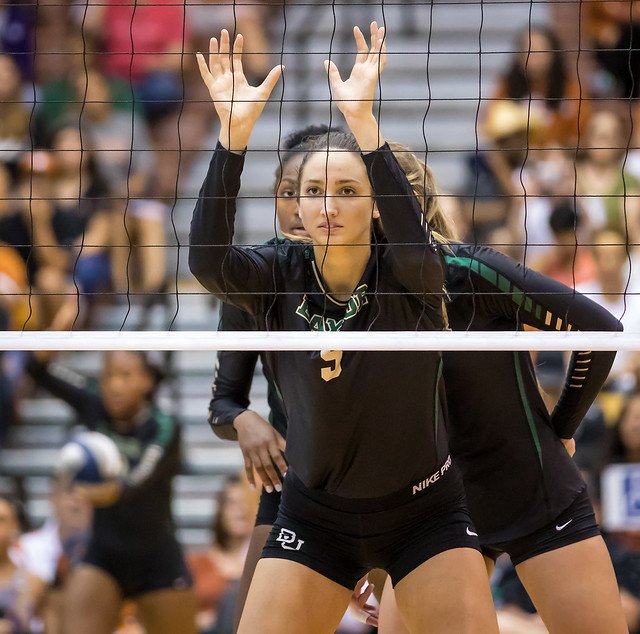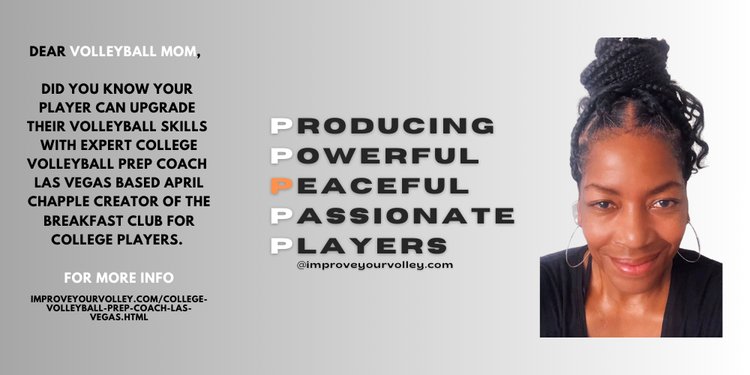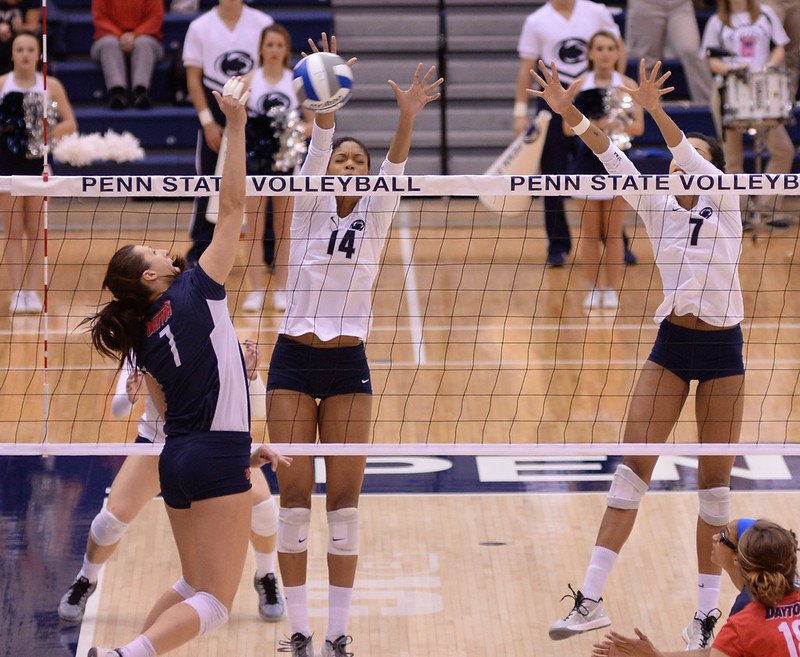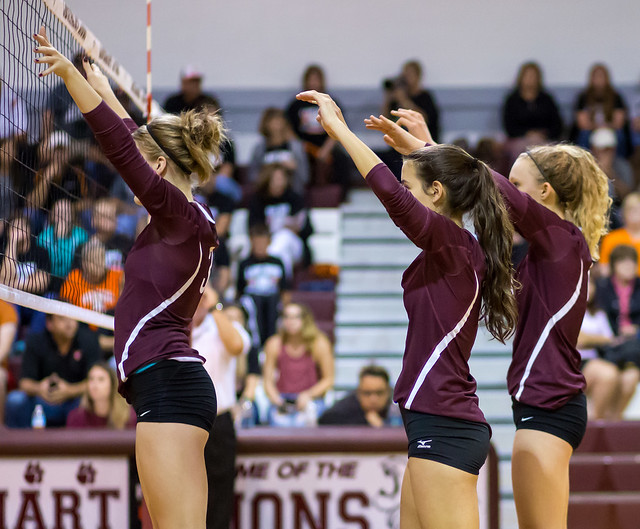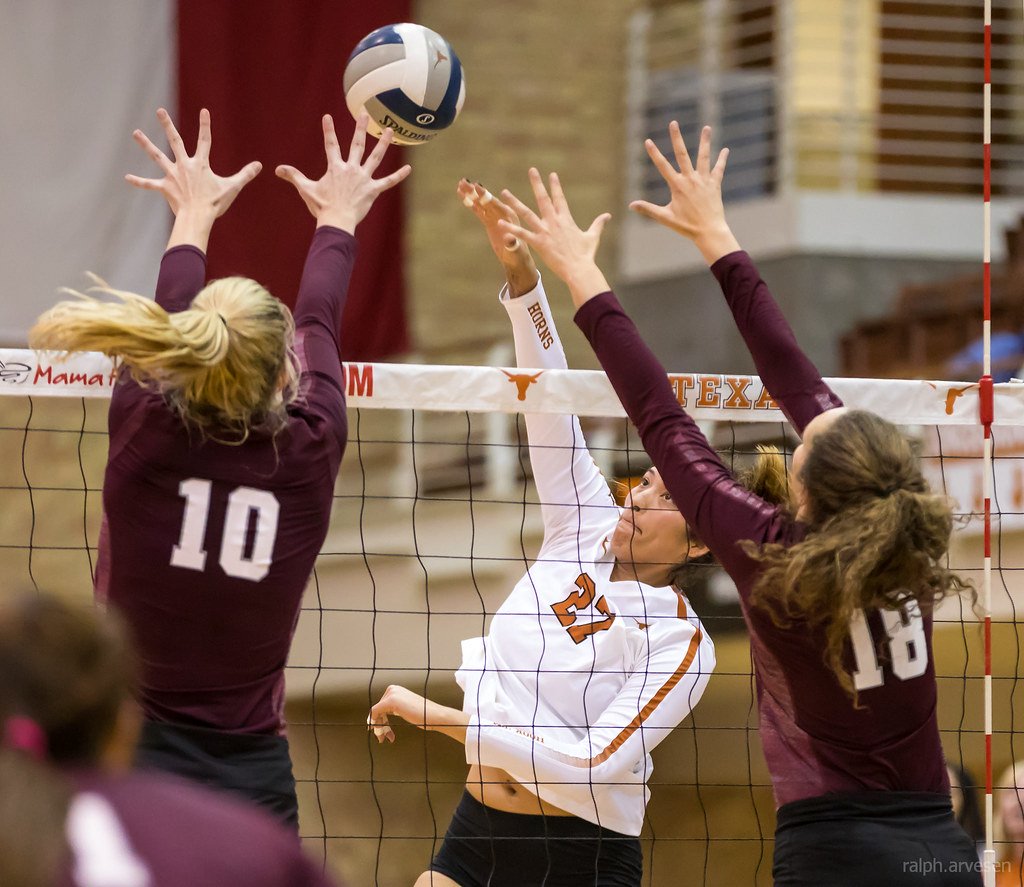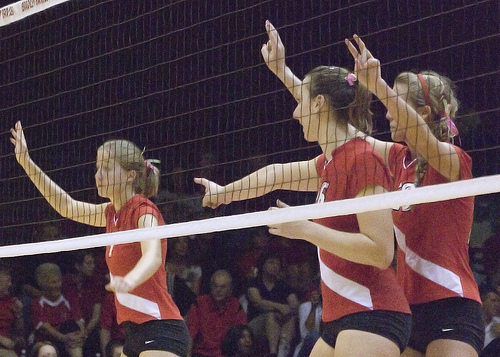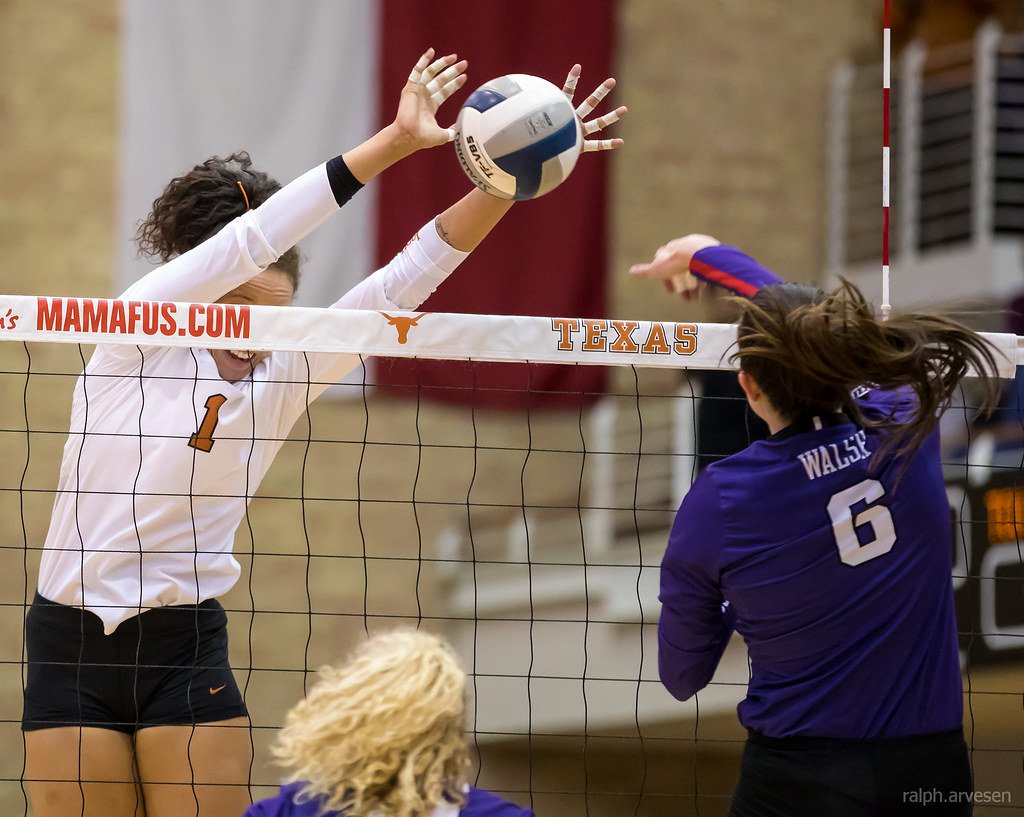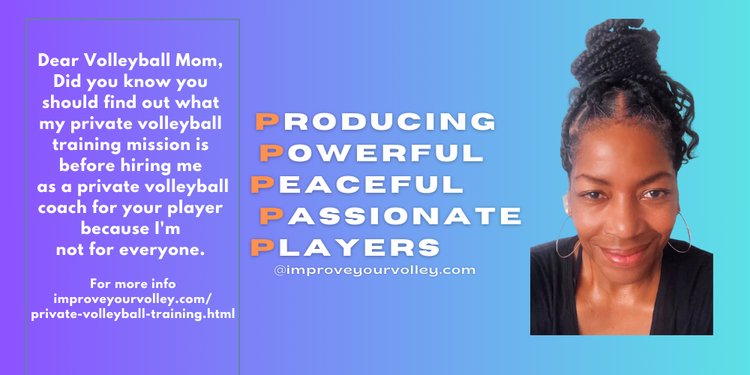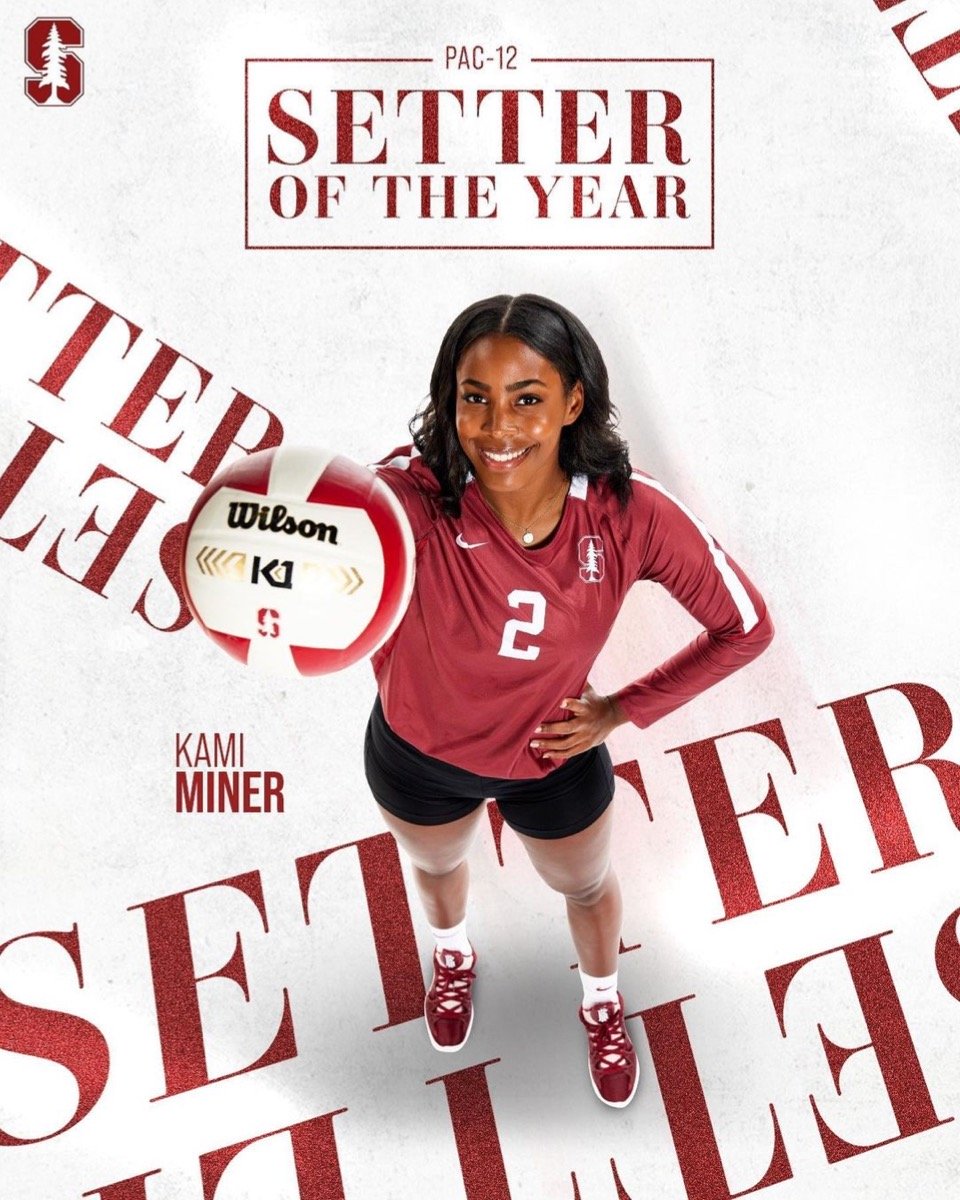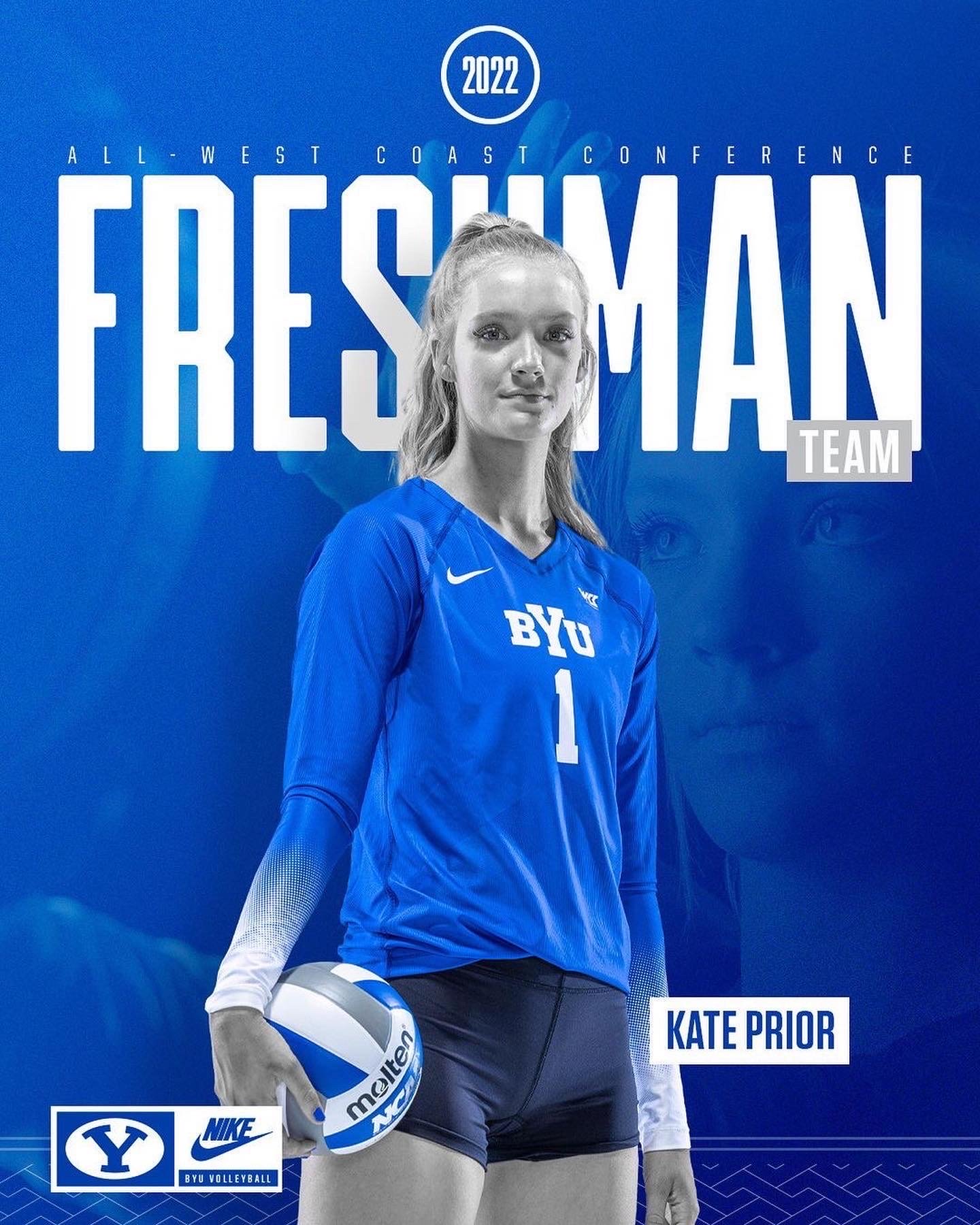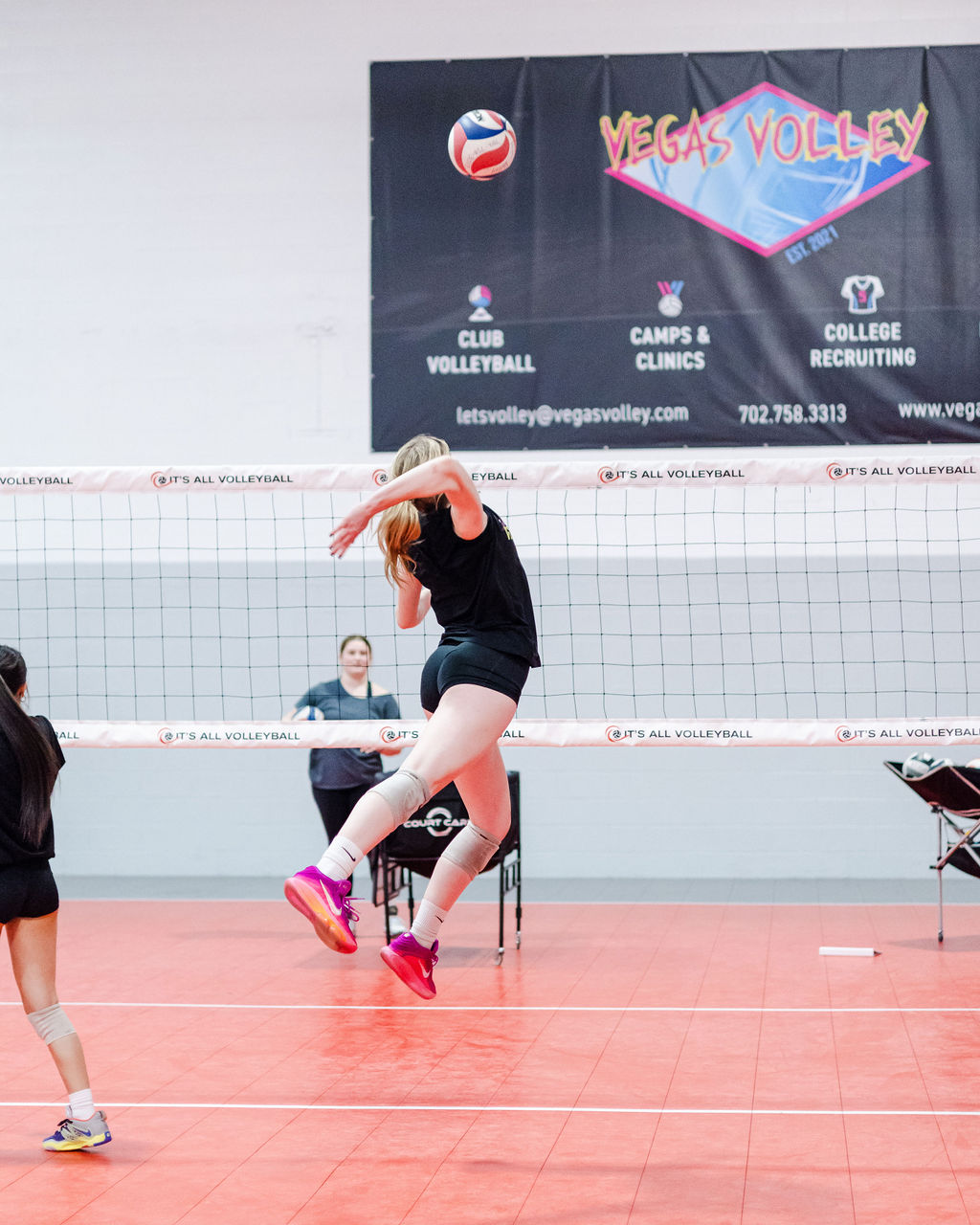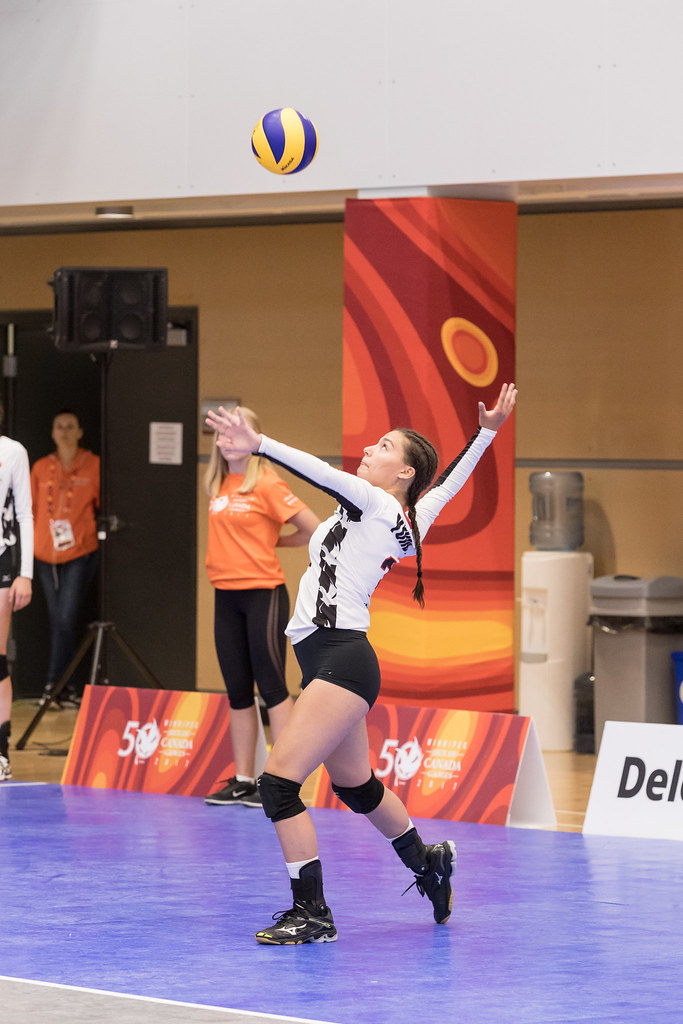- Improve Your Volleyball with Coach April
- Basic Volleyball Skills for Beginners
- What's The Block in Volleyball?
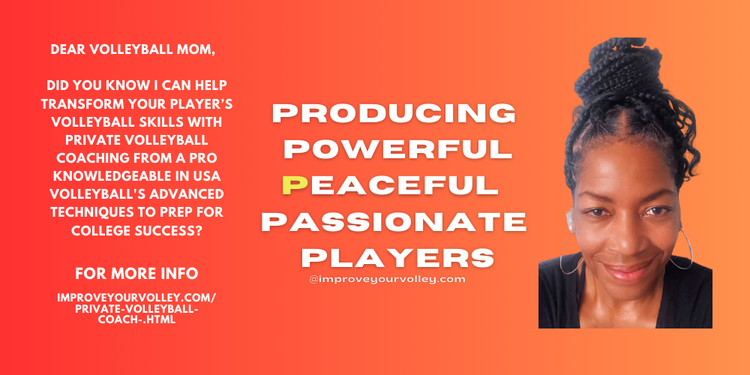 Dear Volleyball Mom,
Do You Know What Sets My Private Volleyball Training Apart From Anyone In Vegas?
I invite You to read what my private volleyball training mission says before considering hiring me as a private volleyball coach because I'm not available for everyone.
Dear Volleyball Mom,
Do You Know What Sets My Private Volleyball Training Apart From Anyone In Vegas?
I invite You to read what my private volleyball training mission says before considering hiring me as a private volleyball coach because I'm not available for everyone.What's The Block in Volleyball: Where Do Blockers Place Their Hands?
Another way to learn how to block in volleyball efficiently is to keep the palms of your hands up close to your shoulders in a ready position before the rally.
Welcome to my comprehensive guide on volleyball blocking.
In this article, I will provide a clear definition of blocking in volleyball and highlight its role as a crucial defensive technique used to stop or redirect the opponent's attack.
Join me as I explore how blocking works in conjunction with the net to create a formidable barrier.
Definition of Blocking in Volleyball
Blocking in volleyball is a defensive technique where players at the net extend their arms and hands above the net to intercept and disrupt the opponent's attacking shots.
It is a strategic move aimed at obstructing the path of the ball, forcing the attacking team to alter or abandon their intended attack strategy.
The Role of Blocking in Defense:
Blocking is a fundamental aspect of defense in volleyball.
Its primary role is to create a barrier at the net that challenges the opposing team's attacks.
Here's how blocking works in conjunction with the net to create an effective defensive line:
1. Obstruction:
When executed successfully, a block acts as a physical obstruction between the attacking team and their target area on the court. It forces the attackers to hit around, off, or over the block, leading to potential errors or less powerful shots.
2. Limiting Options:
A well-placed block limits the attacking options available to the opposing team. By taking away certain angles or hitting zones, the blocking team forces the attackers to adjust their shots, increasing the chances of an unfavorable outcome for the opposing team.
3. Force Errors:
The presence of a solid block at the net puts pressure on the attackers, leading them to make hurried decisions or attempt riskier shots.
This can result in unforced errors, such as hitting the ball out of bounds or into the block itself.
4. Deflect and Redirect:
A successful block can deflect the ball back into the attacking team's court, giving the defending team an opportunity for a direct counterattack or a more controlled defensive play.
5. Psychological Impact:
A well-executed block can have a significant psychological impact on the opposing team. It can create doubt and frustration among attackers, disrupting their rhythm and confidence.
By combining effective footwork, positioning, and timing, blockers play a vital role in the defensive strategy of a volleyball team.
Volleyball blocking is a defensive technique used to obstruct and redirect the opponent's attack.
It works in conjunction with the net to create a formidable barrier that limits the attacking options of the opposing team.
Blockers play a vital role in defense by forcing errors, creating opportunities for counterattacks, and impacting the psychology of the attacking team.
Strong blocking skills, along with effective coordination and communication among teammates, are essential for a successful defensive game plan.
In this section, we will explore specific techniques that volleyball players can implement to perform effective blocks.
These techniques encompass footwork, body positioning, and hand placement, which are essential components of successful blocking.
Let's get into the details:
1. Footwork:
a) Quick First Step:
To initiate a block, it is crucial to make a quick first step towards the net. This allows you to establish a solid base and position yourself in front of the attacker.
b) Lateral Movement:
Maintain agile footwork by shuffling your feet laterally to adjust your position relative to the attacker. This allows you to react swiftly to changes in the direction of the attack.
c) Angle Adjustment:
When blocking, pay attention to the attacker's hitting angle and adjust your footwork accordingly. This involves sidestepping or pivoting to align yourself with the trajectory of the ball.
2. Body Positioning:
a) Balanced Stance:
Start in a balanced stance with your knees slightly bent. Keep your weight distributed evenly on both feet, ensuring stability and the ability to move quickly.
b) Athletic Posture:
Maintain an athletic posture with a straight back and your body leaning slightly forward. This position prepares you to explode into the jump and react to the attacker's movements.
c) Angle of Arms and Shoulders:
Angle your shoulders and arms slightly towards the hitter, ensuring that you are squared up to the net. This positioning provides a larger blocking surface and better coverage.
3. Hand Placement:
a) Hands Over the Net:
Extend your arms fully over the net with your palms facing the attacking side. Your hands should be spread wide to maximize the blocking surface area.
b) Penetration:
Aim to penetrate the net with your hands, meaning that your hands should extend into the opponent's space. This disrupts the hitter's vision, limits their hitting options, and increases the chances of blocking the ball.
c) Timing and Pressing:
Coordinate your hand movement with the attacker's swing. As the ball approaches, time your jump so that your hands reach their highest point at the peak of the attacker's jump. Press your hands firmly and assertively towards the attacker's hitting space to create a strong barrier.
d) Wrist Control:
Maintain firm wrists throughout the block to ensure control and stability. Avoid overly flexing or bending the wrists, as this can weaken the blocking position.
Effective blocking in volleyball requires a combination of proper footwork, body positioning, and hand placement techniques.
By mastering these skills and incorporating them into your defensive strategy, you can significantly influence the outcome of the game.
Focus on agility, balance, and timing to optimize your blocking ability and create a formidable obstacle for opposing attackers.
Practice these techniques diligently to enhance your overall performance as a blocker.
What Happens When You Block In Volleyball?
When you block in volleyball just what should you do with your hands?
A lot of players and high school coaches have difficulty deciding where the hands need to be while moving along the net to block a ball.
I've seen volleyball coaches teach players to keep their arms fully extended above their heads while moving along the net.
This is really too bad because keeping your arms fully extended above your head while trying to run laterally can actually slow a blocker down.
This quite often doesn't allow you to squat to maximize your volleyball blocking skills by using your full block jump.
More often than not, I've seen volleyball players of all ages drop their hands and arms way below the level of the net before block jumping in an effort to gain a couple more inches to their jump.
This technique prevents you from maximizing your blocking skills because it...
a) usually slows down your block jump timing because it takes time to go down before coming back up
b) increases your risk of touching the net when your arms are swinging up in front of you and
c) actually puts more distance between you and the net because of the extra space needed to swing your arms up in front of you, so you are actually trying to block the ball from farther away from the net which wastes a lot of your vertical jump.
So, what's the solution?
"Tiger Hands", "Bear Hands" whatever you want to call it but a front row blocker should keep their "bear paws" also called their blocking hands at shoulder height.
More precisely, when you're learning how to block a volleyball you want to keep your hands six to ten inches in front of you with your palms facing the net, your fingers should be widespread, and you want to keep your wrists straight and rigid not bent or limp.
When you get in your loaded position with knees slightly bent ready to move left or right you need to hold your hands at the bear paw position just above your shoulders until you are ready to actually block jump.
As you jump to block the ball, you need to fully extend your arms over the net as quickly as you can, reaching OVER
the volleyball net, without touching it, when you come out of your loaded ready position to block jump.
You are literally trying to get your armpits over the net!
Imagine that!
The lower body positioning you should maintain as you are in your blocking ready position at the net is pretty much the same position you maintain when you do squats during your weight lifting workout in a gym with a bar on your shoulders.
The difference is that a blocker needs to keep their hands inside their body line right in front of their shoulders.
In the weight room your body is already used to doing this movement over and over again.
Watch the top middle blockers in the world:
Rachael Adams, Foluke Akinradewo,
Thaisa Mendes, Fabiana Claudino
Legs aren't locked straight, but knees are at a very slight bent ready to run, jump or turn in either direction..quickly!
We call this a "loaded" position. An athletic position that allows you to be ready quickly, to spring into action.
Common Mistakes in Blocking and How to Avoid Them
Blocking in volleyball can be challenging, and players often make certain mistakes that hinder their effectiveness at the net.
Let's identify some common errors and provide guidance on how to avoid them:
1. Reaching Too Early:
One common mistake is reaching too early during the blocking motion. This can give the attacker a clear indication of where to hit the ball.
To avoid this, focus on timing your jump with the attacker's approach. Stay patient and wait until the last moment before extending your arms over the net.
2. Being Out of Position:
Being out of position is another prevalent mistake. It can occur when players are slow to react, fail to read the attacker's movements, or lack proper footwork.
To address this, work on improving your anticipation skills and footwork technique.
Stay engaged and ready to move quickly, adjusting your position to align with the attacker's approach.
3. Ineffective Penetration:
Insufficient penetration during the block can significantly impact its effectiveness.
When players fail to reach over the net with their hands, there is a higher chance of the ball sneaking through the block.
To overcome this, focus on extending your arms as far as possible over the net, aiming to penetrate into the attacker's space.
This creates a larger blocking surface and disrupts the hitter's vision.
4. Lack of Communication:
Communication breakdown between blockers is a common issue, resulting in gaps in the block or leaving certain areas vulnerable.
Develop clear communication signals with your teammates, allowing you to effectively coordinate your movements and position at the net.
Maintain constant communication by calling out switches, indicating who will take the front or backside of the block.
5. Overcommitting to One Option:
Occasionally, blockers overcommit to a specific attacking option, leaving other areas open.
This can occur when they anticipate the hitter's movement or fall for deceptive shots. To avoid this mistake, focus on reading the attacker's hitting tendencies, keeping your movements balanced and neutral.
Stay prepared to react to any attacking option and adjust your block accordingly.
6. Poor Body Control:
Lack of body control can hinder blocking effectiveness.
Players may jump too early, lose balance during the jump, or have difficulty maintaining a stable blocking position.
To improve body control, work on strengthening your lower body through exercises that enhance explosiveness and balance.
Practice jumping and landing techniques to maintain stability throughout the blocking motion.
7. Inadequate Recovery:
After performing a block, players sometimes struggle to transition quickly to the subsequent defensive position, leaving gaps in coverage.
Work on efficient recovery movements, such as a quick shuffle or lateral step, to get back into position swiftly.
Focus on consistently resetting your defensive posture to be ready for any subsequent balls.
By recognizing and working to overcome these common blocking mistakes, you can elevate your performance at the net.
Consistent practice, attention to detail, and maintaining good communication with your teammates will help you become a more effective and impactful blocker.
Do You Follow Me on Pinterest?
 Private or semiprivate volleyball indoor/sand lessons are an excellent way for young Las Vegas high school volleyball players to quickly improve their individual skills through a private or semi-private coaching experience.
These lessons are conducted by former pro volleyball player, former USA Volleyball High Performance instructor and Evaluator and Tstreet Vegas 18s head Coach April Chapple on a weekly basis.
Sign up now!
Private or semiprivate volleyball indoor/sand lessons are an excellent way for young Las Vegas high school volleyball players to quickly improve their individual skills through a private or semi-private coaching experience.
These lessons are conducted by former pro volleyball player, former USA Volleyball High Performance instructor and Evaluator and Tstreet Vegas 18s head Coach April Chapple on a weekly basis.
Sign up now!Follow me on Pinterest Volleybragswag to improve your game even faster!
I share alot of individual, partner and easy-to-do volleyball serving drills we do in class with my followers.
Many of these volleyball practice drills you can do at home by yourself or try at your next practice with your teammates.
If you're a B team or JV player trying to make varsity next year...your goal should be to complete 1000 reps a day of at least three of the basic skills on your own...volleyball passing, serving and setting should be at the top of the list.
Volleyball Basics:
Where Do You Go From Here?
We know where you need to go now! Here are three options:
- Learn more about Volleyball Basics by clicking one of the links in the Related Links below.
- Follow the suggested reading on our Sitemap page Learning How To Play (Sitemap)
- Or visit the pages in the How to Play Volleyball section in the drop down menu at the top of the page to get started.
- Improve Your Volleyball Performance with Vegas VB Coach April Chapple ›
- Basic Volleyball Skills: Six Essential Skills Varsity Players Know ›
- What's The Block in Volleyball: Where Do Blockers Place There Hands?
SUSCRIBE
To My Email Newsletter Below!
From Lady Vol to Legend: Coach April Produces Powerful Passionate Players...is that you?
What Are You Looking For?

Hi there!
Thanks for stopping by. Hope you learned something today that will help you reach your volleyball goals.
Be sure to subscribe to my email newsletter so you can learn more each week!
Stay strong! Stay motivated!
-Coach April

SUSCRIBE
to my email newsletter below!
Vegas Volleyball's Unsung Heroes: Celebrating Moms with Peace Love Volleyball Shirts
Ready to energize your volleyball mom journey?
Subscribe to my 'Producing Powerful Passionate Peaceful Players' email list above on ImproveYourVolley.com.
You'll receive energy-boosting tips, exclusive insights from me, Coach April Chapple on maintaining momentum in volleyball.
Let's power up the Vegas volleyball scene together!
Recent Articles
-
The Volleyball Pepper Drill: Partner and Three Player Pepper Drills
Apr 19, 25 02:04 PM
The volleyball pepper drill is a ball control drill using setting, digging and hitting skills usually done as a partner or three player person drill in warmup. -
Best Volleyball Drills For Setters, Hitters, Liberos, Passers Blockers
Apr 19, 25 04:08 AM
Best volleyball drills are essential exercises in the learning process for players to improve your serving, hitting, passing, spiking, setting, blocking skills. -
Volleyball Serve Drills Help Improve Your Serving Down The Line
Apr 19, 25 02:35 AM
Use these volleyball serve drills to improve serve difficulty when serving to zone 5 which helps force the Left Side hitter out of their team offensive system.
